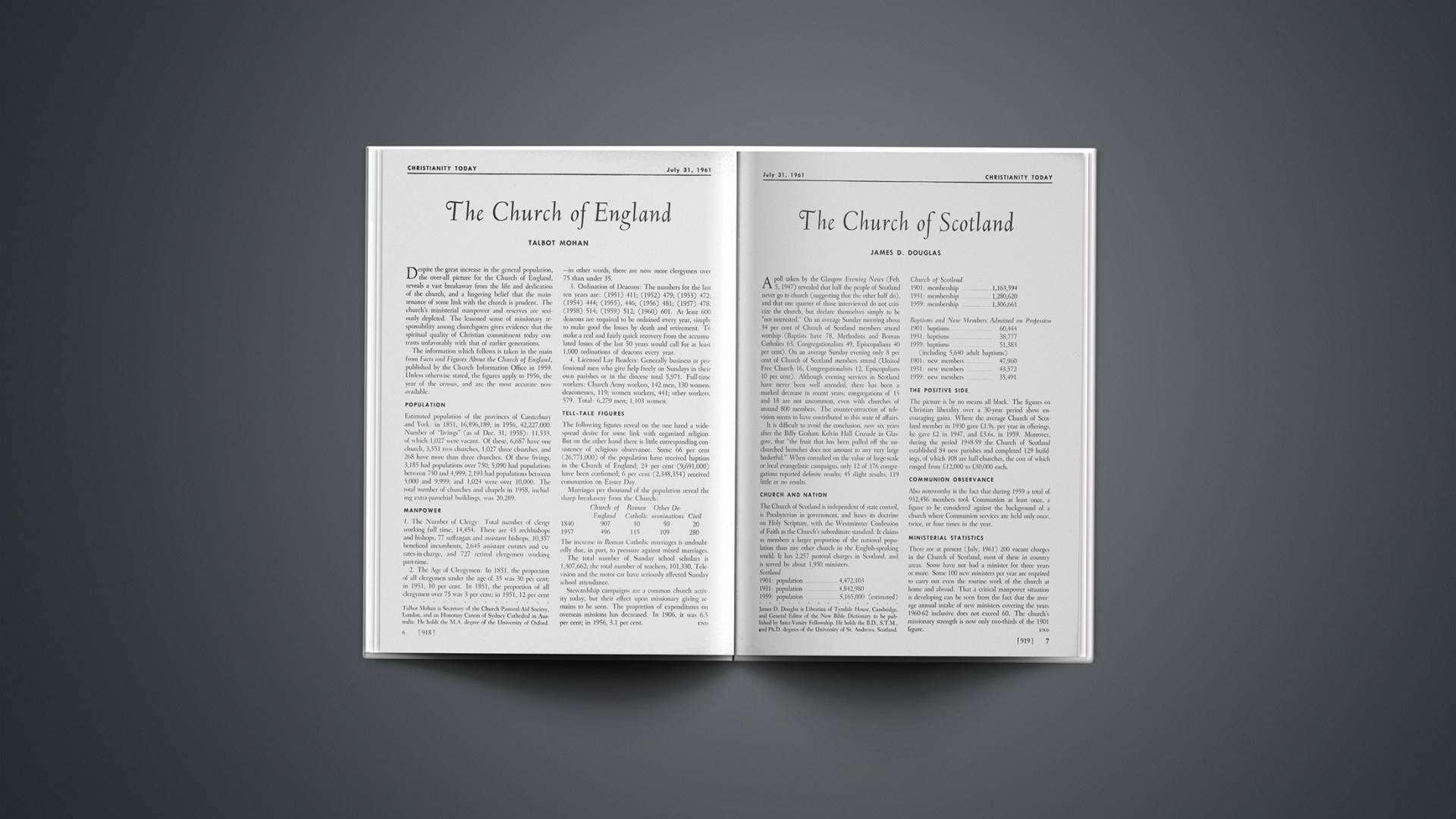Apoll taken by the Glasgow Evening News (Feb. 5, 1947) revealed that half the people of Scotland never go to church (suggesting that the other half do), and that one quarter of those interviewed do not criticize the church, but declare themselves simply to be “not interested.” On an average Sunday morning about 34 per cent of Church of Scotland members attend worship (Baptists have 78, Methodists and Roman Catholics 63, Congregationalists 49, Episcopalians 40 per cent). On an average Sunday evening only 8 per cent of Church of Scotland members attend (United Free Church 16, Congregationalists 12, Episcopalians 10 per cent). Although evening services in Scotland have never been well attended, there has been a marked decrease in recent years; congregations of 15 and 18 are not uncommon, even with churches of around 800 members. The counter-attraction of television seems to have contributed to this state of affairs.
It is difficult to avoid the conclusion, now six years after the Billy Graham Kelvin Hall Crusade in Glasgow, that “the fruit that has been pulled off the unchurched branches does not amount to any very large basketful.” When consulted on the value of large-scale or local evangelistic campaigns, only 12 of 176 congregations reported definite results; 45 slight results; 119 little or no results.
CHURCH AND NATION
The Church of Scotland is independent of state control, is Presbyterian in government, and bases its doctrine on Holy Scripture, with the Westminster Confession of Faith as the Church’s subordinate standard. It claims as members a larger proportion of the national population than any other church in the English-speaking world. It has 2,257 pastoral charges in Scotland, and is served by about 1,950 ministers.
THE POSITIVE SIDE
The picture is by no means all black. The figures on Christian liberality over a 30-year period show encouraging gains. Where the average Church of Scotland member in 1930 gave £1.9s. per year in offerings, he gave £2 in 1947, and £3.6s. in 1959. Moreover, during the period 1948–59 the Church of Scotland established 84 new parishes and completed 129 buildings, of which 108 are hall-churches, the cost of which ranged from £12,000 to £30,000 each.
COMMUNION OBSERVANCE
Also noteworthy is the fact that during 1959 a total of 932,456 members took Communion at least once, a figure to be considered against the background of a church where Communion services are held only once, twice, or four times in the year.
MINISTERIAL STATISTICS
There are at present (July, 1961) 200 vacant charges in the Church of Scotland, most of these in country areas. Some have not had a minister for three years or more. Some 100 new ministers per year are required to carry out even the routine work of the church at home and abroad. That a critical manpower situation is developing can be seen from the fact that the average annual intake of new ministers covering the years 1960–62 inclusive does not exceed 60. The church’s missionary strength is now only two-thirds of the 1901 figure.
Samuel M. Shoemaker is the author of a number of popular books and the gifted Rector of Calvary Episcopal Church in Pittsburgh. He is known for his effective leadership of laymen and his deeply spiritual approach to all vital issues.










